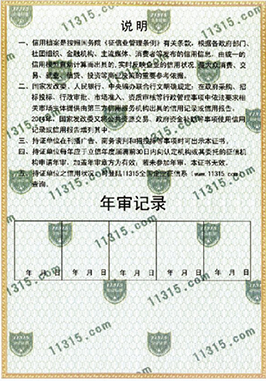- Arabic
- French
- Russian
- Spanish
- Portuguese
- Turkish
- Armenian
- English
- Albanian
- Amharic
- Azerbaijani
- Basque
- Belarusian
- Bengali
- Bosnian
- Bulgarian
- Catalan
- Cebuano
- Corsican
- Croatian
- Czech
- Danish
- Dutch
- Afrikaans
- Esperanto
- Estonian
- Finnish
- Frisian
- Galician
- Georgian
- German
- Greek
- Gujarati
- Haitian Creole
- hausa
- hawaiian
- Hebrew
- Hindi
- Miao
- Hungarian
- Icelandic
- igbo
- Indonesian
- irish
- Italian
- Japanese
- Javanese
- Kannada
- kazakh
- Khmer
- Rwandese
- Korean
- Kurdish
- Kyrgyz
- Lao
- Latin
- Latvian
- Lithuanian
- Luxembourgish
- Macedonian
- Malgashi
- Malay
- Malayalam
- Maltese
- Maori
- Marathi
- Mongolian
- Myanmar
- Nepali
- Norwegian
- Norwegian
- Occitan
- Pashto
- Persian
- Polish
- Punjabi
- Romanian
- Samoan
- Scottish Gaelic
- Serbian
- Sesotho
- Shona
- Sindhi
- Sinhala
- Slovak
- Slovenian
- Somali
- Sundanese
- Swahili
- Swedish
- Tagalog
- Tajik
- Tamil
- Tatar
- Telugu
- Thai
- Turkmen
- Ukrainian
- Urdu
- Uighur
- Uzbek
- Vietnamese
- Welsh
- Bantu
- Yiddish
- Yoruba
- Zulu
നവം . 16, 2024 07:03 Back to list
Understanding Gear Timing Belts for Optimal Engine Performance and Maintenance
Understanding Gear and Timing Belts Essential Components of Automotive Engineering
In the world of automotive engineering, gear systems and timing belts play crucial roles in ensuring the smooth operation of vehicles. These components work together to control the engine's timing, manage power transmission, and ultimately enhance the vehicle's performance. Understanding the functions and importance of gear and timing belts can help vehicle owners maintain their cars effectively and ensure longevity.
What is a Timing Belt?
A timing belt is a critical part of an internal combustion engine. It synchronizes the rotation of the crankshaft and camshaft, ensuring that the engine’s valves open and close at the right times during each cylinder’s intake and exhaust strokes. This synchronization is crucial for optimal engine performance and efficiency. Typically made from strong materials like rubber reinforced with nylon or fiberglass, timing belts are designed to withstand high temperatures and friction.
Failing to replace a worn-out timing belt can lead to catastrophic engine failure. If a timing belt breaks while the engine is running, it can cause severe damage to critical engine components, including pistons and valves. Preventive maintenance involves replacing the timing belt at the manufacturer’s recommended intervals, generally between 60,000 to 100,000 miles, to avoid potential engine damage.
The Role of Gears
Gears are another essential component in automotive design, particularly within the transmission system. They are used to gear down the engine's rotational speed to provide more torque to the wheels, enabling the vehicle to accelerate smoothly. The gear system also allows for shifting between different speeds, optimizing performance based on driving conditions.
gear timing belt

When gears are engaged, they work together to transfer motion from the engine to the drivetrain. This motion ensures that various components function harmoniously, facilitating a smooth driving experience. Proper gear alignment, lubrication, and maintenance are vital to prevent wear and tear, which can lead to costly repairs.
Gear and Timing Belt Interaction
The interaction between gears and timing belts is fundamental in maintaining the vehicle’s overall efficiency. In many vehicles, the timing belt is responsible for keeping the gears synchronized. When the timing belt fails or slips, it can throw the entire system out of alignment, leading to poor engine performance, increased fuel consumption, and potentially severe engine damage.
Regular inspections of both the timing belt and the gears are essential. Mechanics will check for signs of wear, such as fraying or cracking in the timing belt and excessive play or damage in the gears. Keeping these components in good condition is vital for the reliability and safety of the vehicle.
Conclusion
In summary, the gear and timing belt are vital components in any automotive system. They ensure that the engine runs efficiently and power is transmitted effectively to the wheels, enhancing performance and safety. Vehicle owners should prioritize regular maintenance and timely replacements to prevent serious mechanical failures. By understanding the importance of these components, drivers can better appreciate the complexities of automotive engineering and take proactive steps to care for their vehicles.
-
Korean Auto Parts Timing Belt 24312-37500 For Hyundai/Kia
NewsMar.07,2025
-
7PK2300 90916-T2024 RIBBED BELT POLY V BELT PK BELT
NewsMar.07,2025
-
Chinese Auto Belt Factory 310-2M-22 For BMW/Mercedes-Benz
NewsMar.07,2025
-
Chinese Auto Belt Factory 310-2M-22 For BMW/Mercedes-Benz
NewsMar.07,2025
-
90916-02660 PK Belt 6PK1680 For Toyota
NewsMar.07,2025
-
drive belt serpentine belt
NewsMar.07,2025

